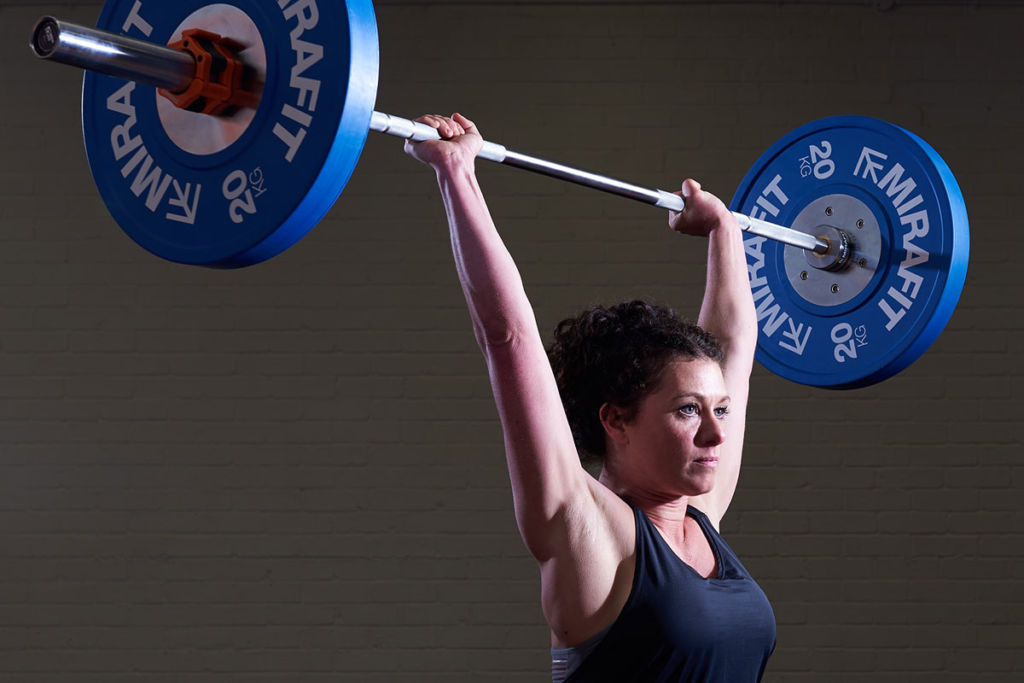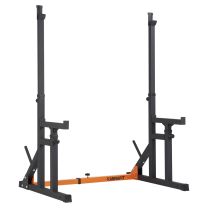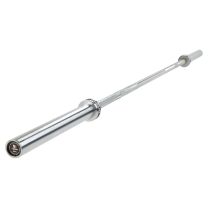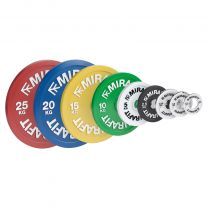Five Weightlifting Exercises You Definitely Should Be Doing
Five Weightlifting Exercises You Definitely Should Be Doing

We already know that compound exercises like squats are some of the best ways to build muscle, as well as develop strength and refine your technique.
But when it comes to getting stronger as well as building muscle, there are some specific exercises that you just can't ignore; mainly the exercises used in powerlifting as well as Olympic weightlifting competitions. This is purely because the types of exercises they do are some of the most advanced and beneficial in terms of strength and technique training.
They will force you to identify any weak points as well as build on a more detailed routine It also gives you a lot more to focus on making regular training more interesting and more effective.
Weightlifting: the basics
In this feature we'll be discussing a few of the different types of lifts done in weightlifting and powerlifting competitions.
Let's quickly look at the key differences:
Bodybuilding – bodybuilding competitions are judged subjectively and are based on muscle size and definition. Even though this is a feat in itself, bodybuilding is more of an artform when comparing it to the other styles of competitions. There is no lifting involved or any specific test of strength.
It's important to point here that muscle size and strength do not necessarily equate. Size and strength require different styles of training and you can be strong with smaller muscles, or much larger but with an average amount of strength.
Weightlifting – this is the style of lifting you see at the Olympics and involves doing lifts known as the snatch and the clean and jerk. Because of the tight competition rules in weightlifting competitions, you'll see a much more defined technique during these sorts of competitions with very specific movements. The bars and weight plates are also very specific. Bumper Plates are more commonly used to ensure the bar starts off at the same height each time regardless of the weight load, and also to allow competitors to drop the weight following the lift.
Powerlifting – powerlifting is more about overall strength. Competitions focus on three main lifts: the squat, deadlift and bench press. And because powerlifting is all about lifting the most weight, it's judged on getting in a complete lift so it's less technically demanding than weightlifting.
Powerlifters tend to train whole muscle groups rather than target individual muscles. So rather than "leg day" it's more likely to be "lower body day".
And when it comes to your training regime, adopting techniques and training styles from each type, and weaving them into your routine, can really help you improve.
Training to build strength and improve technique:
We've spoken before about how to get stronger.
The general rule is:
• lift a higher weight with fewer reps to build strength (80-90% of your maximum weight load for 1-5 reps, for 3-5 sets with 3-5 minutes in-between)
• lift slightly less weight but with more reps to build muscle (75-85% of your maximum weight load for 8-12 reps, for 4-6 reps with a 0-30 second rest in-between)
With this in mind, these are our top five compound exercises for advanced lifters which will help build both strength and muscle.
Best weightlifting exercises
1 - Squat

There are lots of people who squat. But there aren't that many people who can squat with the correct technique. There is a lot to think about when doing squats and you need to take a full body approach. Training not only for strength, but flexibility, technique and timing.
Box squats and pin squats will help you develop strength here as well as pause squats to help cut the stretch shortening cycle. They'll also help increase the amount of power you possess while in a deep squat position.
2 - Bench Press

Benching is one of the best ways to build chest strength. Do them properly and you'll also work your shoulders, arms and back. Adding on weight with a poor form is going to end up in shoulder and wrist injuries. Grip, angle and posture are all just as important when doing a bench press.
Remember that form is really important for benching. Keep your back tight and arched, make sure your hips are firmly on the bench. And drive through your feet. It's also important to keep your wrists straight and make sure your elbows don't flare outwards.
3 - Deadlift

Deadlifts are one of the best ways to load up your posterior chain and build up some real muscle mass. The technique is particularly important, not only to avoid injury but also to ensure you get the most out of the exercise. Employing a straight spine, tight glutes and fluid hip hinge movement will all contribute to your progress.
This is where bumper plates can really help. Being the same size – as well as a good 45cm in diameter – you can ensure your deadlifts always start from the same height. You can also stand on the plates and use them to do decline deadlifts.
4 - Snatch

The snatch is a more complex move but worth practising if you have a good training space - like a garage gym - and a training partner to give you feedback. The snatch starts off with the bar in a deadlift position. Take a wide grip on the bar (usually at the very ends but it depends on your arm length) and quickly move the bar up into an overhead press while still in a deep squat position. Then push upwards so you're stood up straight.
A really technical movement that should be practised first with a Technique Bar to ensure your form is right before you start adding any weight.
5 - Clean and press

This is the most difficult of all of the five moves. Mainly because it involves a front squat which requires excellent shoulder and wrist mobility, as well as a good amount of strength to be able to resist falling forward.
Again, best practised first with just a bar as well as an experienced training partner.
Start off with the barbell either on the floor, at the knee, mid thigh or wedged in at the hip, depending on your level. Your grip will be narrower than when doing a snatch. Lift the bar up into a front squat position. You'll now be in a quarter squat position rather than at full depth. There is also sometimes a slight pause here as well before you move into the press.
Finally push up into the overhead press. Some weightlifters will also place a foot behind them to do this so their legs are in a lunge position rather than a squat position.
Incorporating any of these moves into your training regime is going to help you build strength, as well as give you a more composite approach to your workouts. Naturally however, there are some risks involved so they should be saved for more advanced lifters. Especially the snatch and the clean and press which will need to be done without safety bars.
Always train safely, practise your form and technique without weight first and then slowly build up as you improve. Get your training partner to help out and train regularly for the best results.
If you'd like to know more about building strength, read our blog on the seven best compound lifts for maximum gains.
For more content, follow us on Instagram, YouTube, TikTok, and on our official Mirafit Facebook page.
Enter your email to signup to our newsletter
Tags: Equipment > Bars & Weight Plates ; Exercise Type > Strength







